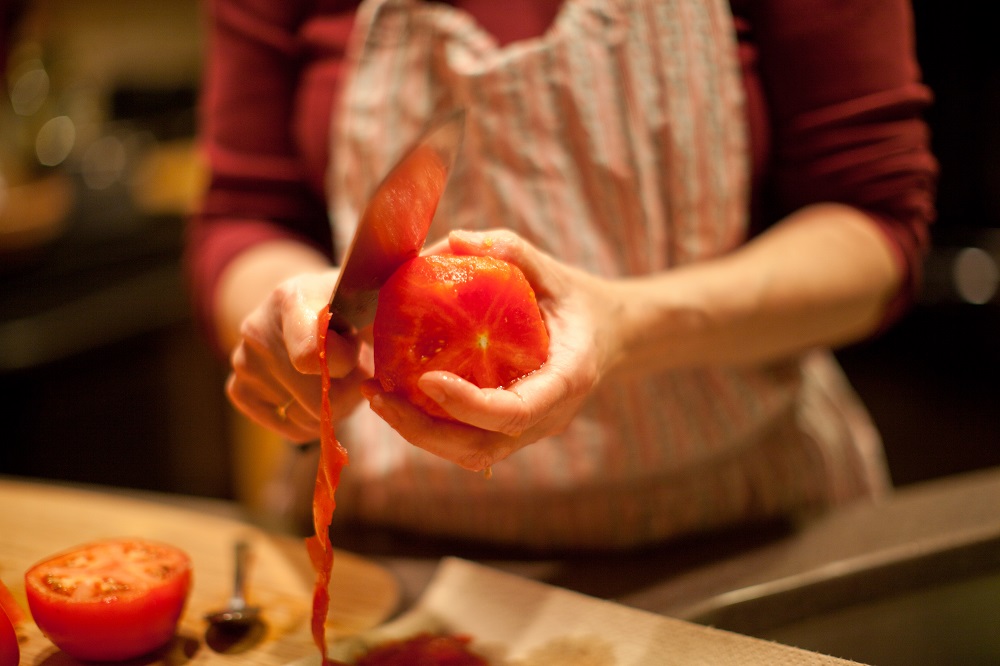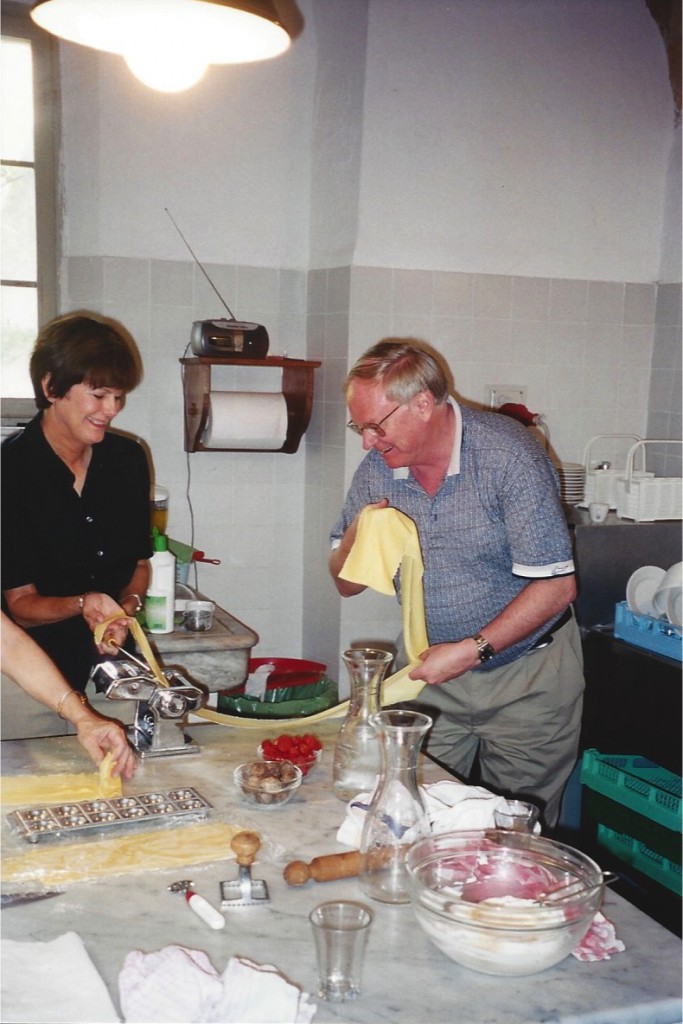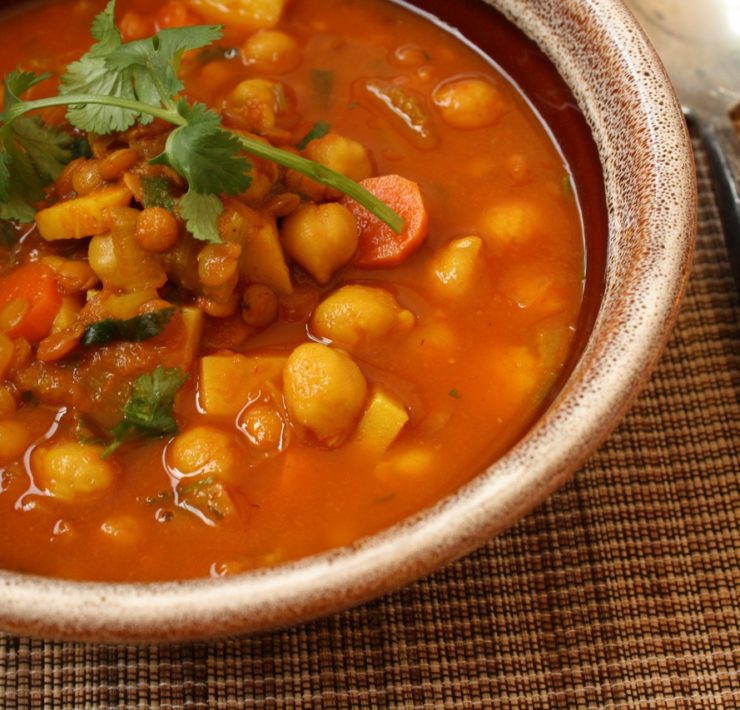Discovering cooking inspirations in Morocco

During an 11-day trek in North Africa, one writer finds a new love in layers of flavors and spices
Straining to remember the Arabic word for chicken, I finally stammer out, “I’d like to have a kilo and a half chicken,” hoping I have at least some of the words right. The man at the counter looks at me with kind, dark eyes and smiles, the same kind of smile a kid gets after reciting his or her ABCs. I’m also trying hard not to notice the chickens in the cages, especially the one next to him that’s looking at me with its little red beady eyes.
I don’t really have any idea what I’ve ordered. The Arabic I’ve tried to learn is part of a cooking class I’m taking in the hopes that once I’m home, I’ll be able to replicate some of the fabulous Moroccan food I fell in love with during my 2012 visit to this North Africa country. And here I am in a dark, musty market in Marrakesh, far off any tourist path, trying to buy the centerpiece of today’s menu.
There’s no real danger I’ll end up with a yak or something instead of a chicken. The vendor is familiar with student cooks and knows Edwina Golombek, owner and operator of the nearby House of Fusion, a bed-and-breakfast that specializes in cooking classes and foodie tours and treks.
Finally, the man nods, and I realize why the language lessons included the phrase, “I will come back.” While my classmates and I are off buying the vegetables for the rest of today’s menu, he’ll be dispatching the main ingredient for our efforts: chicken tagine.
I never meant to be eye to eye with the star of a meal. I never even meant to be a cook. Prior to my first trip to Morocco, my kitchen efforts were mainly confined to baked chicken, buttered noodles and peanut butter fudge.
But all that changed when my husband, David O’Brien, and I went to Morocco for the first time. Visiting this arid country in July might not have been one of our better ideas, though. A camel ride in the desert is tough to enjoy at temperatures greater than 100, but it was on this trip guided by Hassan Ait Said, of Berber Space Morocco, where we enjoyed some of the best meals we’ve ever had.

Smitten
During that 11-day trip, I was entranced by Moroccan cuisine with its multilayered flavors and spices.
The unique blend of smells, tastes and textures stem from the country’s long and varied history. For centuries, Morocco was on the spice route that brought adventure and flavor to Europe. The result is Moroccan food infused with layers of spices, including cumin, cinnamon, ginger, turmeric and saffron, which is produced in Morocco. But the variety in food also stems from the various people who have called this northwestern African country home. The people of Morocco include the native Berber, mountain and sometimes nomadic people. The Arabic influences are seen in the food as well as the architecture. Portions of Morocco were colonized or settled by the Spanish and French, which gives this African country a European feel.
That infusion of people and spices produces dishes that include unusual combinations. I fell in love with Moroccan food, surprising and distinctive, familiar yet exotic all at the same time.
Yes, I was smitten.
 Tagine travails
Tagine travails
Although our guide was very good at finding great places for us to eat and stay, unfortunately Hassan was also a young man. In Morocco, a predominately Muslim country, that meant he didn’t actually cook or know how to cook. So when I asked him countless questions about the food of his country, he could only direct me to the people who were making our meals, most of whom didn’t speak enough English to satisfy my craving to know how something was made, what spices the foods contained and worst of all, how to make the essential Moroccan dish, a tagine.
Through the quirkiness of English, the word tagine refers to both the food as well as the cooking vessel itself, typically a two-piece clay or ceramic item with a conical top. And I knew I had to have a tagine in order to make Moroccan food. So I bought one.
As a result, I ended up with a 20-pound, clay pot in my backpack, which I carried from place to place as we traveled from Marrakesh to the desert, the mountains and back. Throughout the trip, I kept telling myself it would be worth it once I was enjoying delicious real Moroccan food at home. And, I told myself, I’d never have to do that again.
Stunted success
While on the trip, I jumped online and ordered some Moroccan cookbooks. I settled on two described as authentic: The Food of Morocco and Tagines and Couscous. Both were waiting for me when I got home with my tagine, which I managed to get home without breaking.
Then I read the instructions for the use of my tagine. Contrary to what Hassan had told me, a traditional clay tagine can’t be used in the oven. In fact, to use one on a glass-top, electric stove, you need a diffuser. Diligently, I headed off to all the kitchen departments and stores in Columbia. I checked out the various international grocers as well. But none of the items I found would work on my stove, so once again, I turned to online resources, and a cast-iron diffuser was soon on its way. Finally, I “seasoned” my tagine according to the instructions from the book, which involved soaking it in water for 12 hours, letting it drain and then rubbing it with garlic and olive oil.
After all that, I wanted to eat the pot right then and there.
The diffuser arrived, and I tried out my tagine. I was in heaven. The dishes I made were wonderful. Some recipes required a few extra trips to the international grocers in Columbia, but the diffuser search had made me familiar with all the stores, and most of the spices were surprisingly easy to find even at Columbia’s regular grocers.
Along the way, I did more research and found I could also make Moroccan food using a Dutch oven and even a slow cooker, but those methods seemed to lack the same authentic flavor. I kept experimenting, and the food got better and better — until the day I got impatient. The key to a Moroccan tagine is slow, even heat. But one day, I was in a hurry, and I turned the heat up, up and up, trying to speed up the process until I heard the crack. I’d broken my tagine.
It was back to the Dutch oven and my slow cooker.
Back to school
Even with the cookbooks and tips I learned online, I wasn’t satisfied with my Moroccan offerings, so when David had an opportunity to attend a conference in Morocco, I knew what I was going to do: I was going to learn to cook in Morocco.
The result was an itinerary of three classes, one with the oldest, most traditional and luxurious restaurant in Marrakesh, La Maison Arabe; one offered in Essaouira on Morocco’s western sea coast at l’Atelier Madada; and an edgier one offered by House of Fusion. In fact, I even managed to talk David into attending one of the classes.
Each class was different. At La Maison Arabe, the cooking class was more formal with a visit to a spice boutique, not a smelly stall stocked with chickens. At that class, my husband and I learned the importance of presentation and even learned to make roses out of tomato peels. In Essaouira, the class included a trip to a market but one that didn’t require looking future meals in the eyes. There, I learned the importance of chopping the ingredients finely and why no Moroccan cook would ever use a food processor. The dada, or cooking teacher, said it would bruise the ingredients and change their taste.
But it was at the House of Fusion, taught by a former Australian who had her own approach to Moroccan food, that I received the elementary Arabic lessons.
So did visiting the market and staring the key ingredient in the eyes make me respect Moroccan food more? Not really. The real lessons came from how all the dadas taught the cooking classes. They laughed while they cooked and smiled at our stumbling efforts, gently urging us to chop more as necessary and assuring us that whether our rose looked like a flower or a pile of tomato cuttings, it was OK. There was no focus on exact measurements or techniques, but instead, there was encouragement to add a pinch of this or that along the way and to try something new. Lentils and noodles? Sure, that’s harissa soup. Eggs cooked over simmered tomatoes? That’s a tomato jam tagine. Orange slices sprinkled with rose water, cinnamon and sugar? That’s a dessert.
So in the end, I learned that making Moroccan food isn’t about the technique, the effort or even about taming a tagine; it’s about the willingness to go on the adventure and try something new. Even if that means you have to bring another 20-pound tagine home in your backpack, it’s worth it.
Mary Phillips
Mary Phillips, a partner with TreecePhillips, a government communications and public relations firm in Jefferson City, has taken cooking classes all over the world, but her favorite spot to don an apron is Greenwood, Miss., where the Viking Range Corp. is headquartered and offers themed cooking classes. But it isn’t the upscale cooking equipment of Viking that draws Phillips and her husband, Brian Treece — often with other couples in tow — year after year. She’s also drawn by the area’s Delta blues music, the opportunity to visit longtime friends and the Southern vibe of the town where the movie The Help was filmed.
She’s made cooking a part of her vacation for years, including once in Paris. “My next trip, there will hopefully include a class in the private home of a professional chef with the day starting out by shopping for ingredients in the public markets,” Mary says.
Recipe provided by Mary Phillips
Southern Comeback Dressing
Ingredients:
3 cloves garlic
1 small onion
1 tablespoon water
2/3 cup chili sauce
½ cup vegetable oil
juice of 1 lemon
1 teaspoon Worcestershire sauce
1 dash of hot sauce, such as Tabasco
1 teaspoon black pepper
1 cup mayonnaise
¼ cup ketchup
1 teaspoon dry mustard
1 dash paprika
1 teaspoon salt
Directions:
Chop onion and garlic in food processor. Add remaining ingredients to food processer, and blend until smooth. Adjust seasonings to taste. Can be used as a salad dressing, served over grilled vegetables or as a sandwich spread. Store in refrigerator.

Anne and Brian Brooks
Italy is where Anne and Brian Brooks, University of Missouri School of Journalism professor emeritus, started adding cooking to their travels. Their cooking education started with a class in Tuscany in 2001 that included a lesson on how to make ravioli.
“We take the classes for fun,” Anne says. “We like to eat. It’s not to change my style of cooking or anything like that.”
As far as switching to making their own ravioli after taking the class: “Ludicrous!” Anne says. “One afternoon is not going to be enough to teach you to make these things yourself, but it was fascinating.”
In Italy, even the men got involved, and Anne laughs as she recalls the flour-strewn kitchen and everyone’s antics. The menu, she says, included a standing rib pork roast with lots of olive oil, herbs and garlic and zucchini blossoms battered and fried.
Anne has also taken classes in a number of locations and notes the settings and atmosphere can be quite different. In Bordeaux, France, the class she attended consisted of watching a chef cook a meal in a restaurant with no hands-on experience.
In Argentina, the cooking class was held outside and involved cooking on an outdoor grill with participants pitching in to help, followed by an olive oil tasting. The class was held at Postales Del Plata Chacras de Cora Lodge in the heart of Argentina’s wine country. The menu included empanadas, pastries stuffed with spicy beef, “bife de chorizo” and “vigilante clasico y helado,” cheese ice cream and dulce de sweet potato cream, each course paired with an appropriate local wine.





